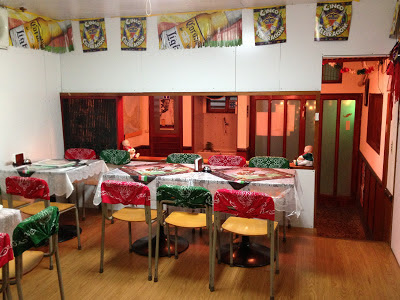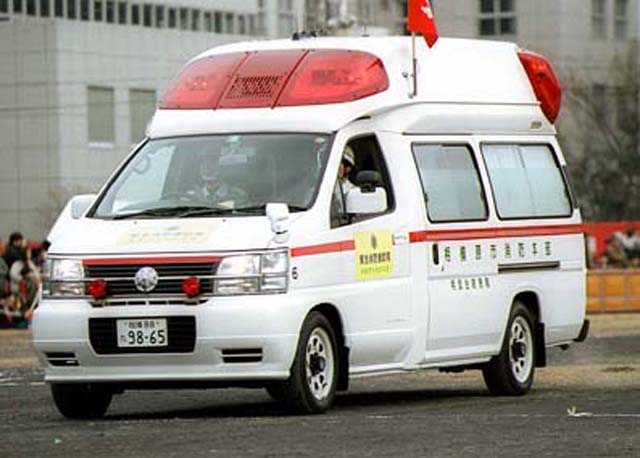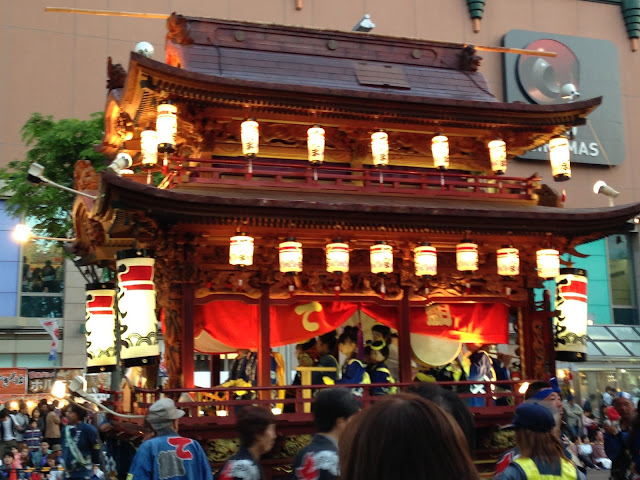In the midst of the night revelry during the Hamamatsu Festival, I rushed a friend to the hospital. This is my first time to accompany a friend to a Japanese hospital. It's my first time (and hopefully my last) in Japan. The experience was both funny and scary.
Just before I entered my apartment gate, my friend sent me a message telling me she's thinking of calling an ambulance. She has been having back pains the whole day. She can walk and sit but she cannot bend without feeling any pain. She had a hard time getting up from the bed. (The doctor later said that she has lumbargo or severe lower back pains.)
I was honestly not in the mood to help anyone at that time (it was so late already and I was just so tired from partying) but I realized how difficult it must be for anyone to be sick alone and in a different country. Also, she was considering to call an ambulance so I thought it must be serious.
So after a few minutes, I walked in her apartment. She called the ambulance. What should have been a less-than-five-minute call was longer because she couldn't speak Japanese. Thankfully, the person on the other side tried his best to understand her. All the while, we were looking funnily at each other. She was scared but she also doesn't know what to say. I didn't know either. I was just a comforting presence there.
Within 10 minutes after the call, the ambulance was there. The funny part was when the paramedic was trying to act out. First, the paramedic asked if my friend bumped her head. Because he cannot speak English, he pointed to his head and bump it on the wall. We simultaneously said "No! No!" while crossing our arms in an X fashion.
Then, the paramedic acted again as if he slipped on the floor. We said "No!" again quelling our giggles. He looked funny and it felt like we were watching a pantomime.
He acted one more time which we didn't understand. So, it was turn to explain that my friend cannot bend. I acted as I was in pain while I bend. My friend laughed along with the other two paramedics.
After a few minutes, we gave up and called a friend who knows how to speak in Japanese. I don't know why we thought of her only at the last minute. She could have spared us from those moments. On the other hand, I was also thankful that I experienced it (without me being the sick person) because it made me realize the gravity of being sick in a foreign country.
(More on health-related articles in Japan, here.)
After our Japanese-speaking friend talked to the paramedic, my friend-in-pain was placed in the ambulance.The paramedic who was with us kept on browsing an English book translator so he can check other symptoms. If I were alone, I would feel more depressed. I am already sick then I also have to find ways to explain my sickness. I wouldn't be surprised if I'll just break down and cry. More so, what if my friend's case was really an emergency like a serious injury and serious accident. It would be more difficult to explain.
I guess the best way to avoid this complication is to keep in check of one's health and safety. This is especially true in a foreign country. In a way, we were glad we're in Japan where people seemed to take their jobs seriously. We were grateful to the three paramedics who did their best to help us, act out and brought us to the hospital.
PS: Just in case you can't avoid getting sick the ambulance hotline in Japan is 119.
























